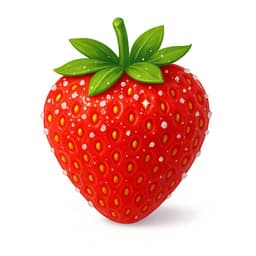For dessert
in Spanishde postre
/deh POHS-treh/
The most standard and natural way to say 'for dessert' when asking what is available or stating what you want to eat. It literally translates to 'of dessert'.

When the waiter arrives with options, you'll be ready to decide what you want 'de postre'.
💬Other Ways to Say It
para el postre
/PAH-rah el POHS-treh/
Used when you are designating something for the dessert course, or bringing something to a meal. It emphasizes the purpose or time.
¿Qué hay de postre?
/keh ay deh POHS-treh/
The specific set phrase for asking 'What's for dessert?'
como postre
/KOH-moh POHS-treh/
Means 'as dessert.' Used to describe the function of a dish.
algo dulce
/AHL-goh DOOL-seh/
Literally 'something sweet.' Often used as a synonym for wanting dessert.
🔑Key Words
Key Words to learn:
📊Quick Comparison
The difference between 'de postre' and 'para el postre' is subtle but important for sounding natural.
| Phrase | Literal Meaning | Best For | Avoid When |
|---|---|---|---|
| De postre | Ordering food, stating what you are eating ('I'm having cake for dessert'). | Explaining the purpose of an object. | |
| Para el postre | Designating time or purpose ('I'm saving room for dessert' or 'This spoon is for dessert'). | Simply ordering what you want to eat. |
📈Difficulty Level
The word 'postre' is straightforward, but remember to tap the 'r' lightly—don't roll it heavily like a double 'rr'.
The main challenge is remembering to use 'de' instead of translating 'for' directly.
Knowing when dessert happens (late!) and the etiquette of 'sobremesa' adds cultural depth.
Key Challenges:
- Using the correct preposition (de vs para)
- Vocabulary for specific desserts (flan, helado, pastel)
💡Examples in Action
¿Qué tienen de postre hoy?
What do you have for dessert today?
Dejé un espacio para el postre.
I saved some room for dessert.
De postre, quiero el flan, por favor.
For dessert, I'll have the flan, please.
Traje este pastel para el postre.
I brought this cake for dessert.
🌍Cultural Context
The Sacred 'Sobremesa'
In Spain and many Latin American countries, dessert is often the gateway to 'la sobremesa'—the time spent chatting at the table after the meal is finished. This period can last anywhere from 30 minutes to several hours. Rushing off immediately after dessert is sometimes seen as rude.
Fruit vs. Sweets
In many Spanish households, everyday 'postre' is often just a piece of fresh fruit or yogurt. Elaborate cakes and pastries are typically reserved for weekends, celebrations, or restaurant meals.
Coffee and Dessert
It is very common to order coffee (un café) alongside or immediately after dessert. In places like Spain, you might order a 'café solo' (espresso) to cut the sweetness of the dessert.
❌ Common Pitfalls
Using 'Por' instead of 'De' or 'Para'
Mistake: "Saying 'Quiero esto por postre'."
Correction: Quiero esto de postre.
Confusing 'Desert' and 'Dessert'
Mistake: "Pronouncing or writing it like 'desierto'."
Correction: Postre
💡Pro Tips
The Preposition Trick
Think of 'de postre' as 'of dessert' (as in, 'consisting of dessert'). If you are ordering or eating, use 'de'. If you are bringing something to a party, use 'para' (for the purpose of).
Asking for the Menu
If you want to see the dessert options, you can ask: '¿Me trae la carta de postres?' (Can you bring me the dessert menu?).
🗺️Regional Variations
Spain
In Spain, lunch is the main meal, so dessert at 3 PM is very common. Fruit is a standard 'postre' option on daily menus (menú del día).
Mexico
Very sweet desserts are popular. You might hear diminutives like 'un postrecito' (a little dessert) to sound polite or imply a small portion.
Argentina
Dulce de leche is king here. If you ask for dessert, expect options heavily featuring it. Coffee usually follows dessert rather than accompanying it.
💬What Comes Next?
The waiter asks if you want dessert
¿Desean algo de postre?
Do you (plural) want anything for dessert?
No gracias, solo la cuenta.
No thanks, just the check.
You want to share a dessert
¿Uno para cada uno?
One for each of you?
No, es para compartir.
No, it's to share.
🔄How It Differs from English
The biggest hurdle for English speakers is the preposition. English uses 'for' (I want cake FOR dessert), while Spanish prefers 'of' (Quiero pastel DE postre) to indicate composition/category. Spanish uses 'para' (for) mostly when talking about the *time* of dessert or the *purpose* of an object.
False Friends & Common Confusions:
Why it's different: 'Por' usually means 'because of' or 'by' or 'in exchange for'. Saying 'por postre' sounds like you are trading something for dessert.
Use instead: De postre
🎯Your Learning Path
➡️ Learn Next:
How to ask for the bill in Spanish
After dessert comes the bill—it's the natural next step in dining.
How to say delicious in Spanish
You'll want to compliment the food if the dessert was good.
How to order coffee in Spanish
Coffee and dessert go hand-in-hand in Hispanic culture.
✏️Test Your Knowledge
💡 Quick Quiz: For dessert
Question 1 of 3
You are at a restaurant and want to order ice cream as your dessert. How do you say 'I want ice cream for dessert'?
Frequently Asked Questions
Can I just say 'postre'?
Yes! If a waiter asks what you want, you can simply say 'El flan, por favor' (The flan, please). You don't always need the full 'de postre' phrase if the context is clear.
Is 'dulce' the same as 'postre'?
Not exactly. 'Postre' refers to the course (dessert), while 'dulce' generally means sweet or candy. However, in some regions, people might ask if you want 'algo dulce' (something sweet) at the end of a meal.
Why shouldn't I use 'por'?
In Spanish, 'por' often implies an exchange or cause. Saying 'por postre' sounds strange to native ears, almost like you are doing something on behalf of the dessert. 'De' or 'para' are the correct prepositions here.
What are some common Spanish desserts I should know?
Classics include 'flan' (custard), 'arroz con leche' (rice pudding), 'tres leches' (milk cake), and 'churros' (often eaten with chocolate, though sometimes for breakfast rather than dessert!).
📚Continue Learning Spanish Phrases
Explore More Phrases in These Categories
Find similar phrases to expand your Spanish vocabulary:
Want to Learn More Spanish Phrases?
Browse our complete collection of Spanish phrases organized by situation, from basic greetings to advanced conversations. Perfect for travelers, students, and anyone learning Spanish.
View All Spanish Phrases →

